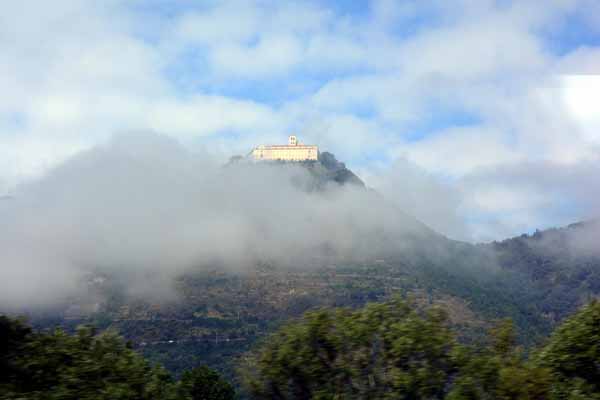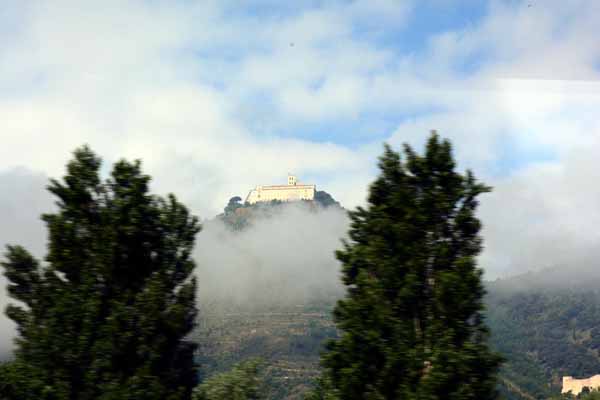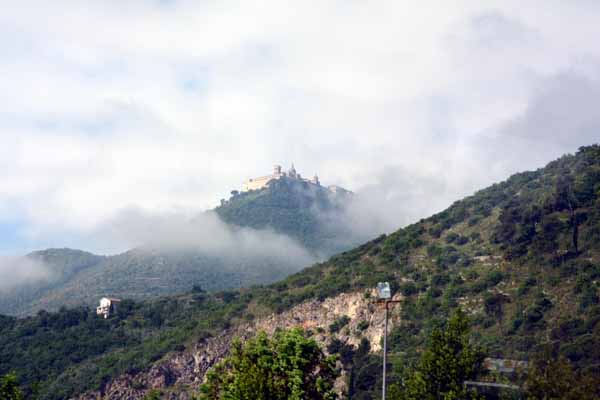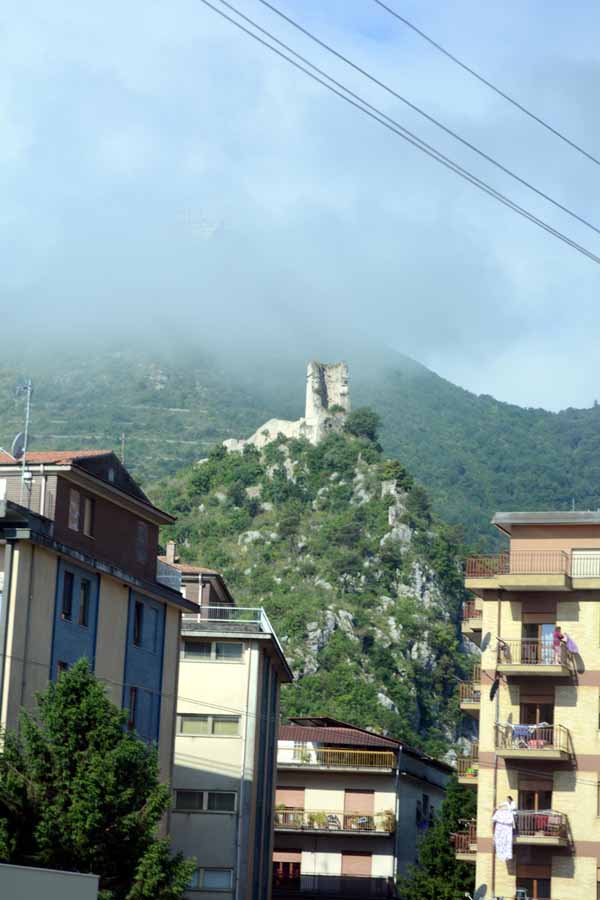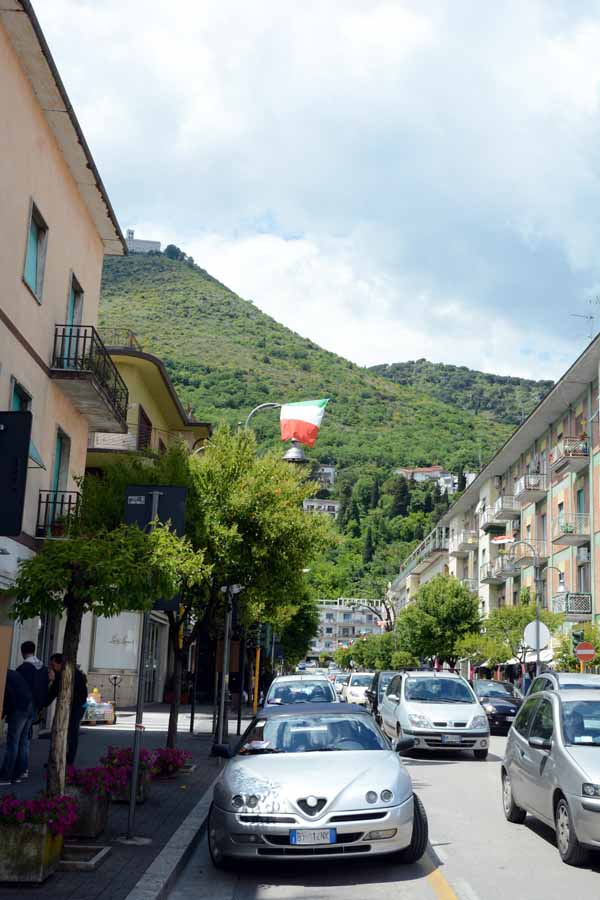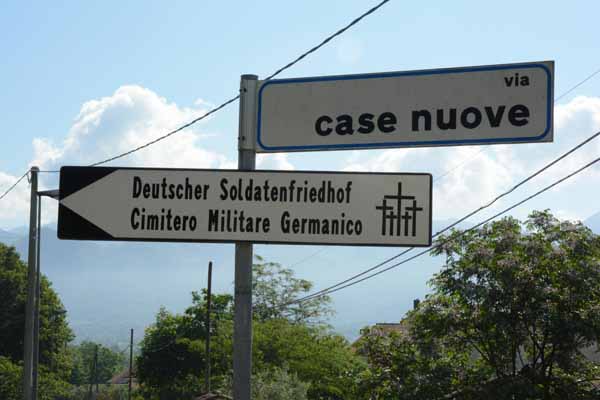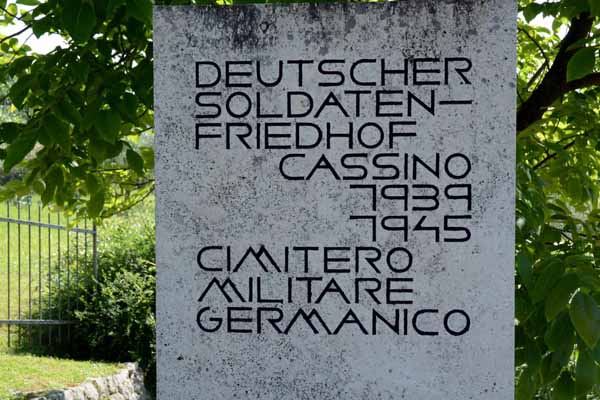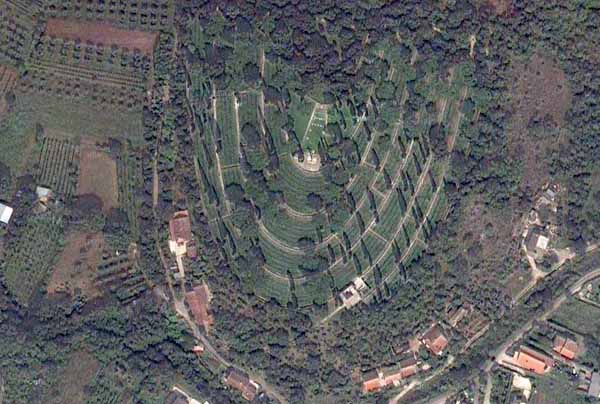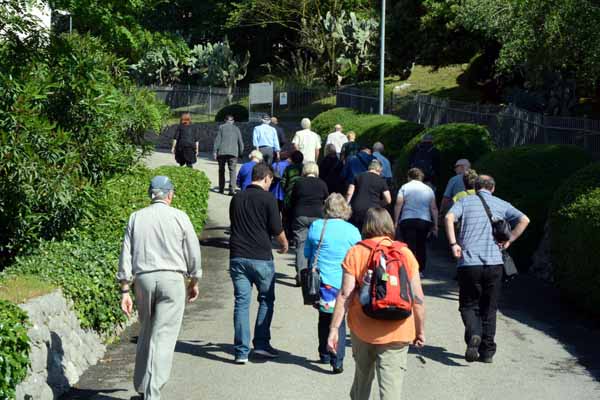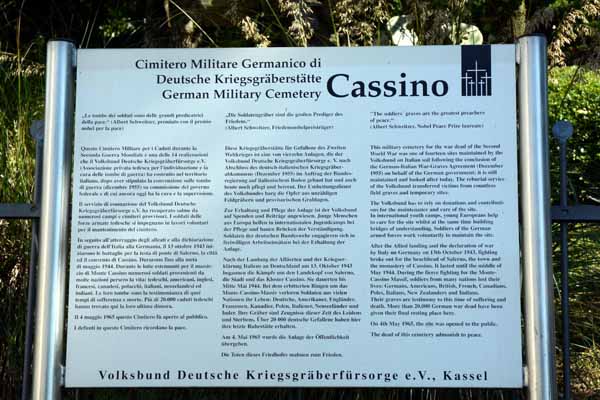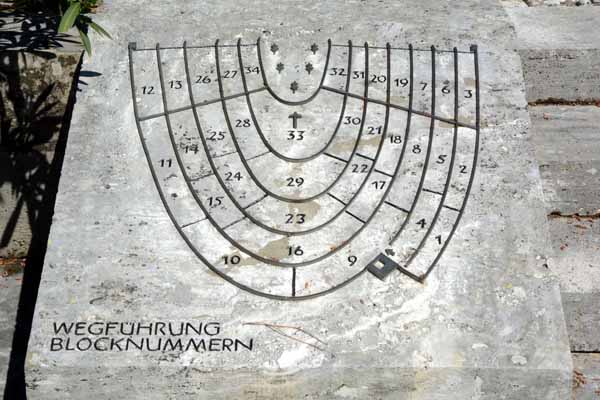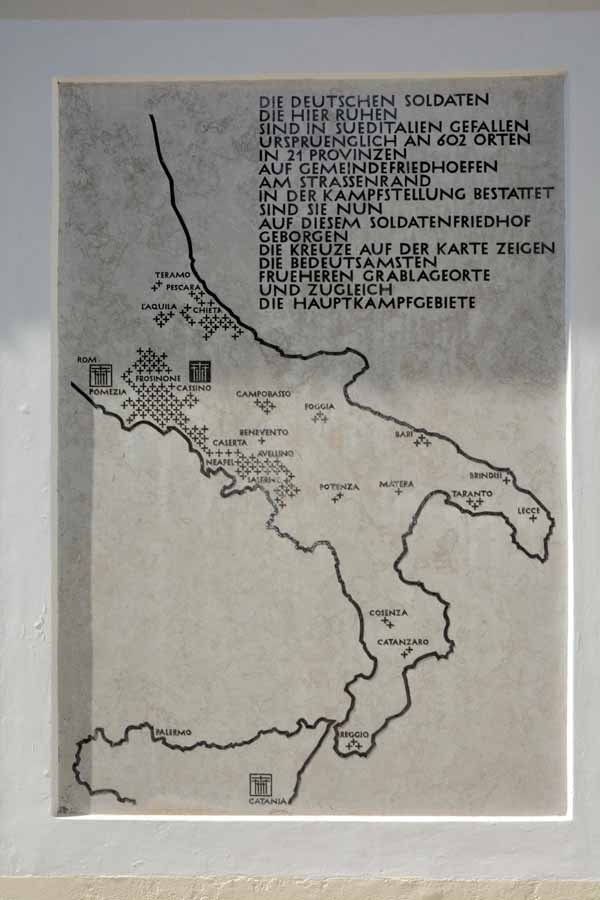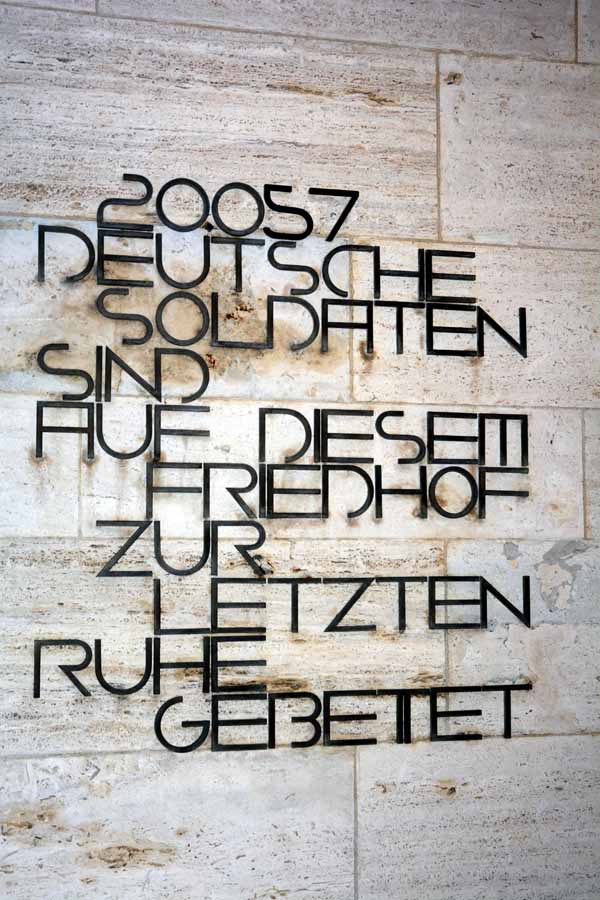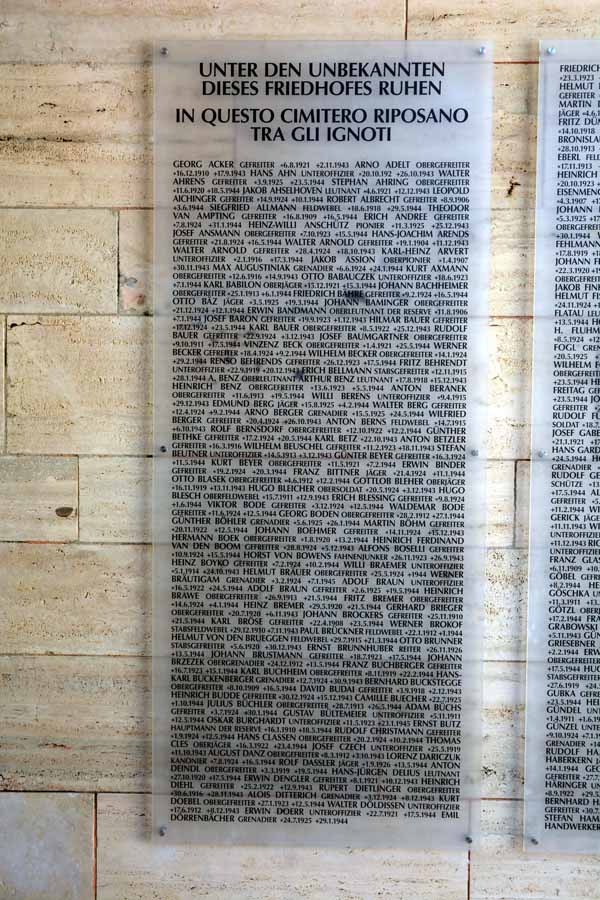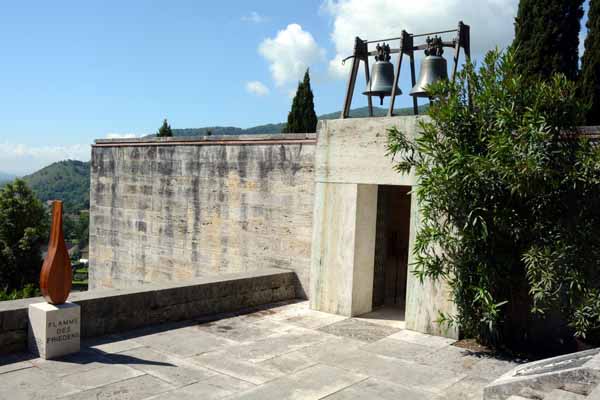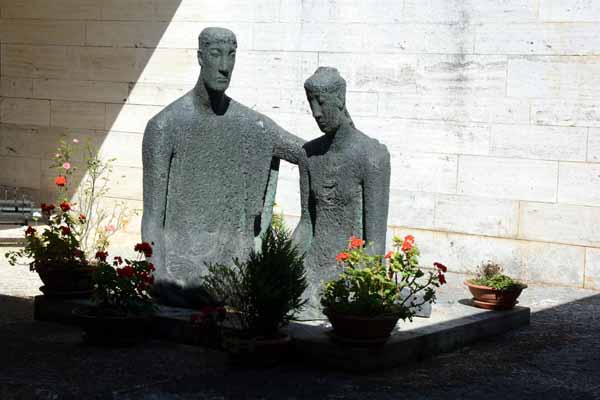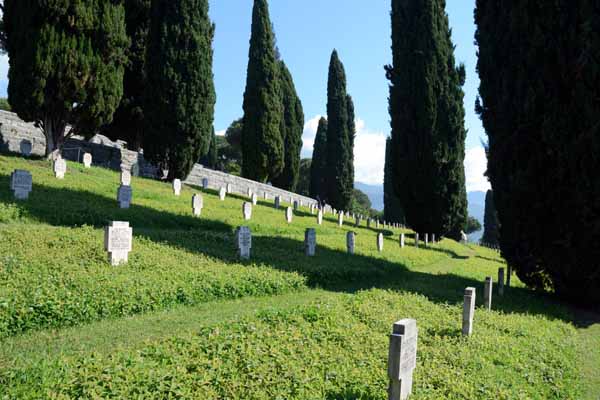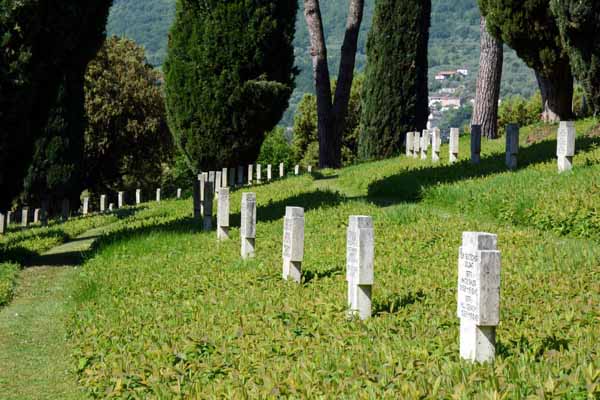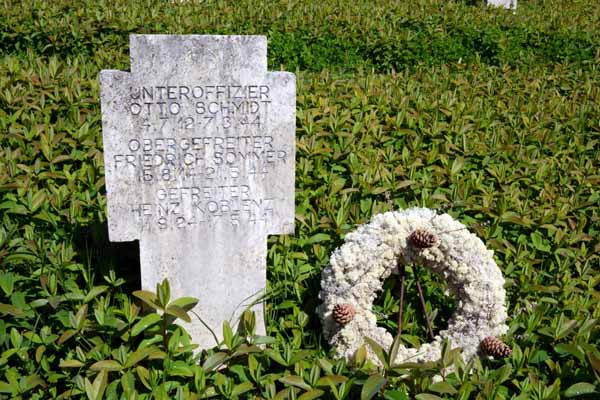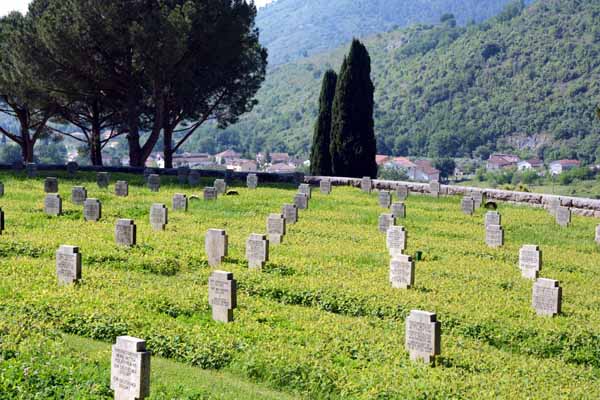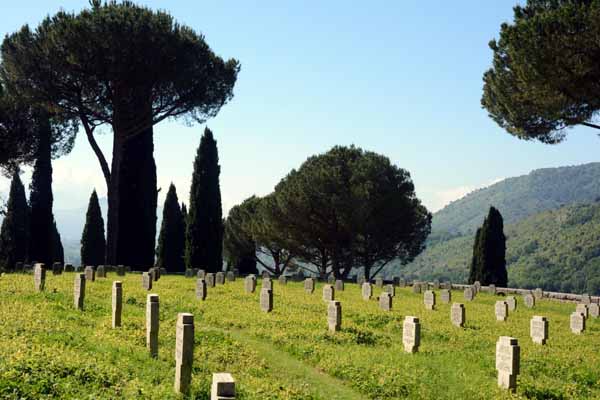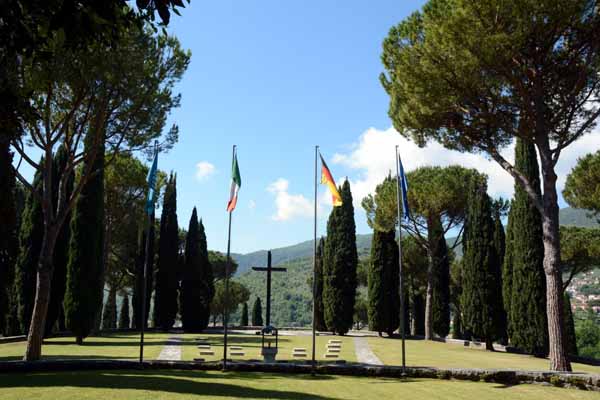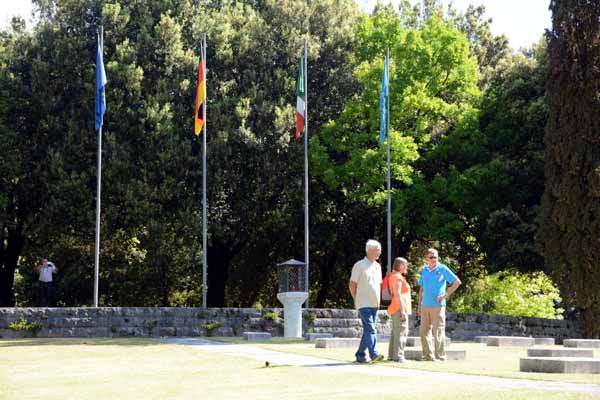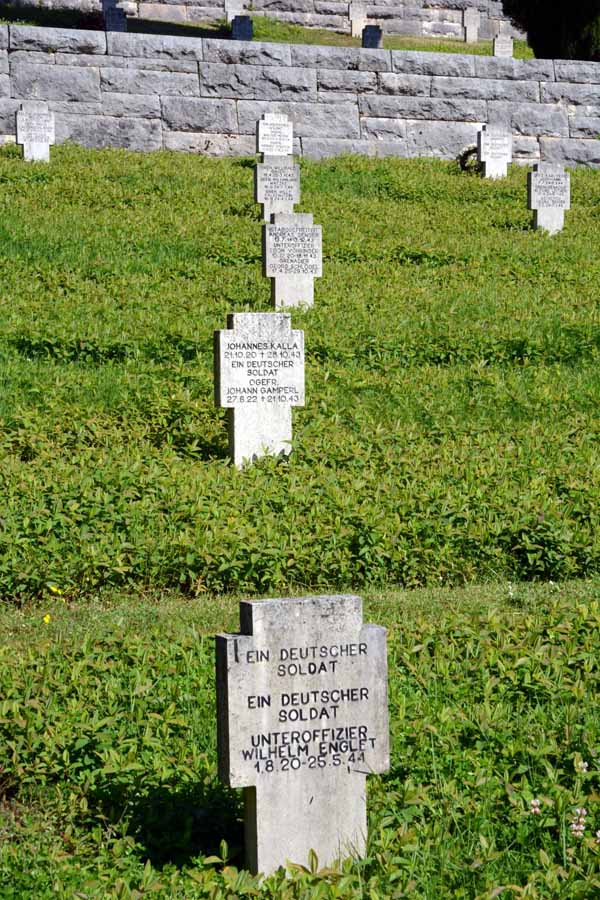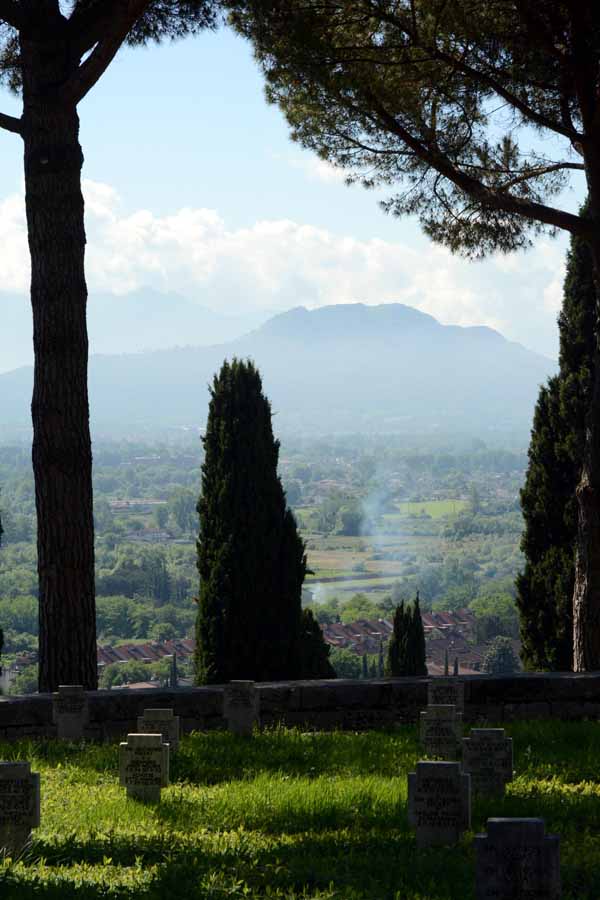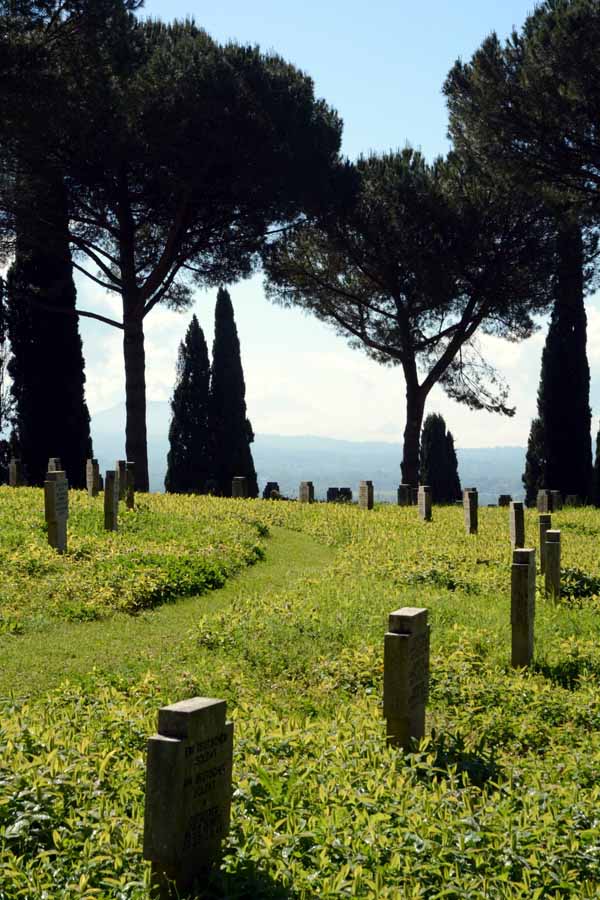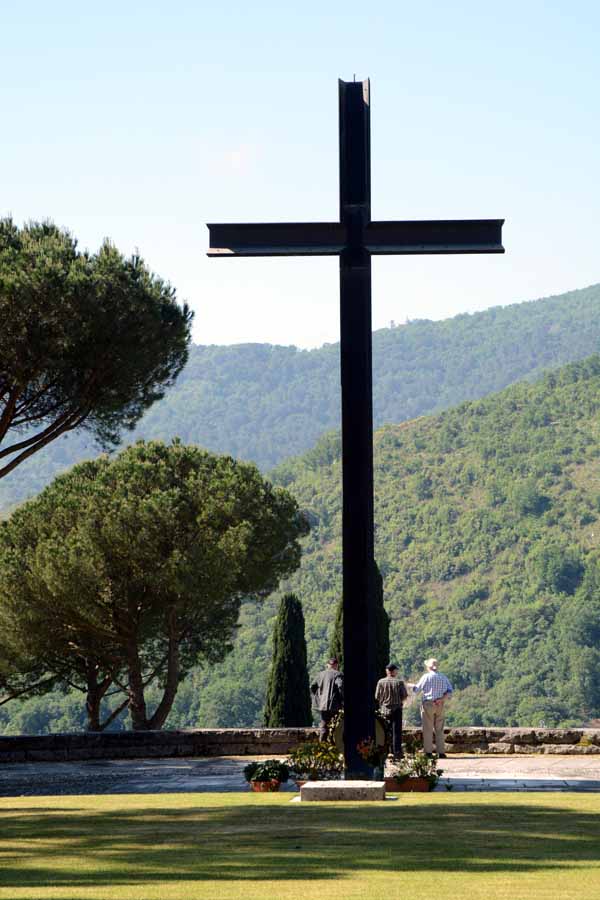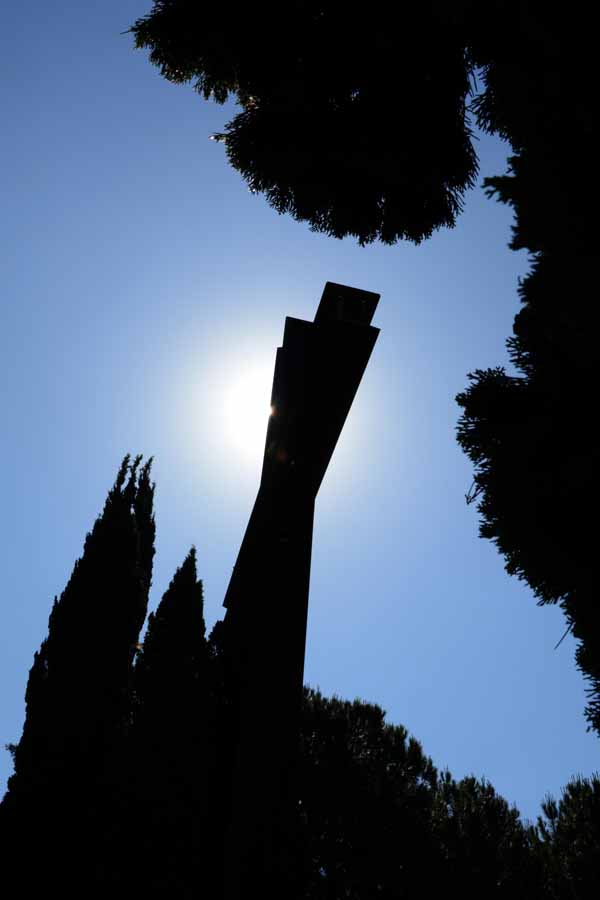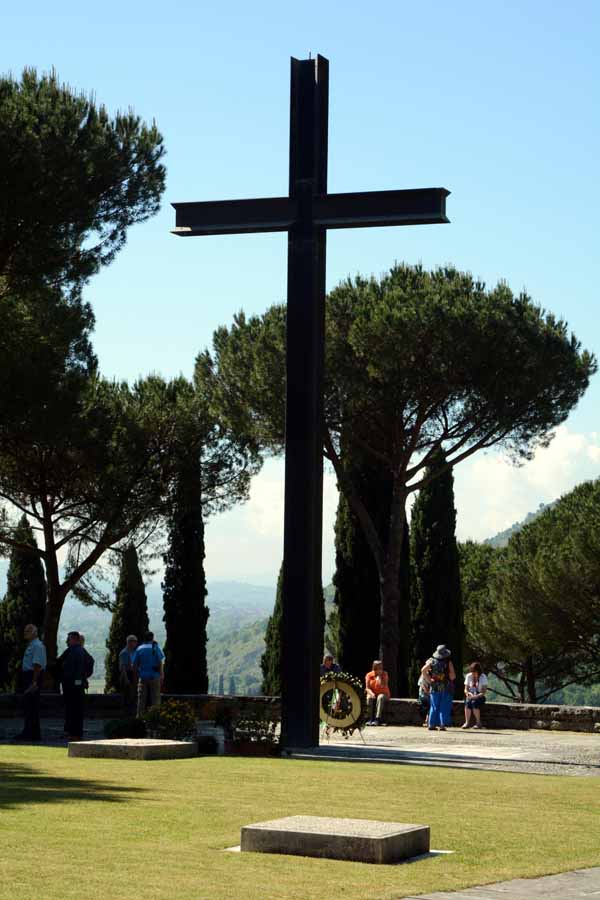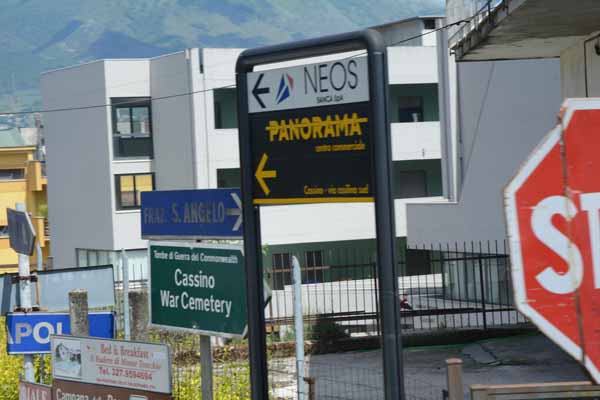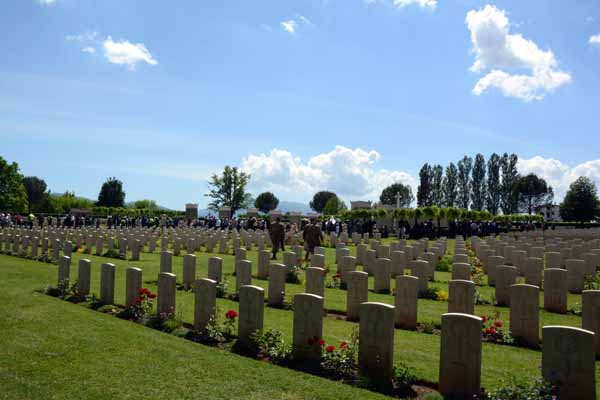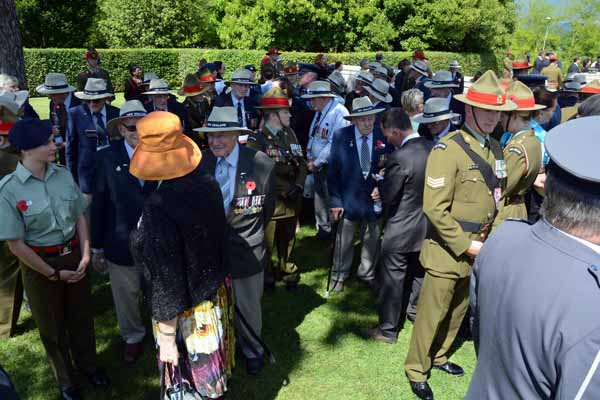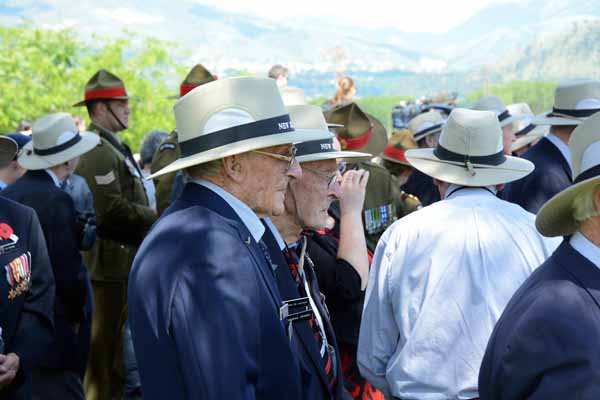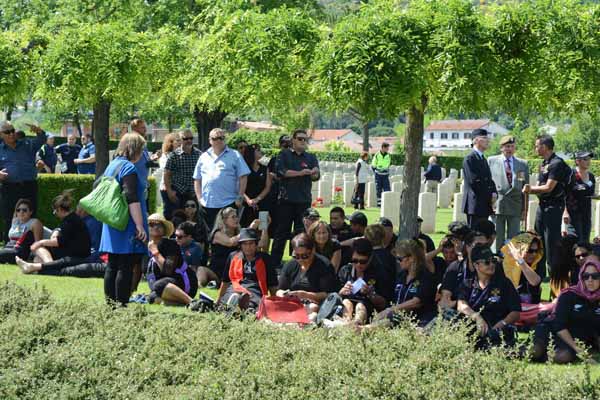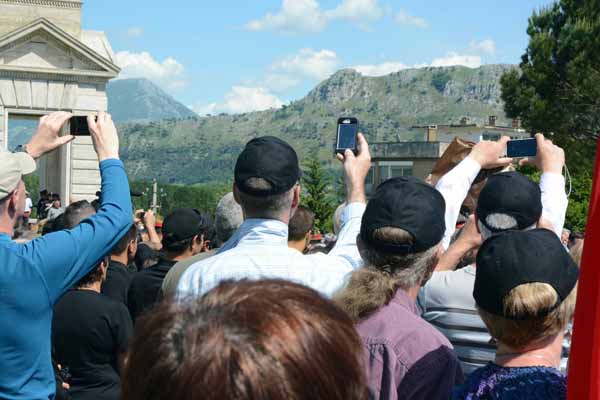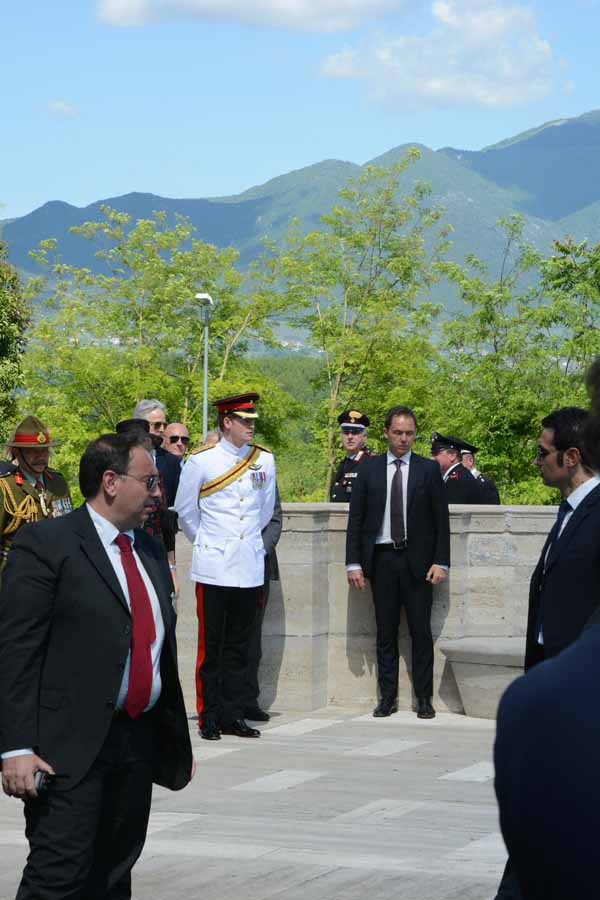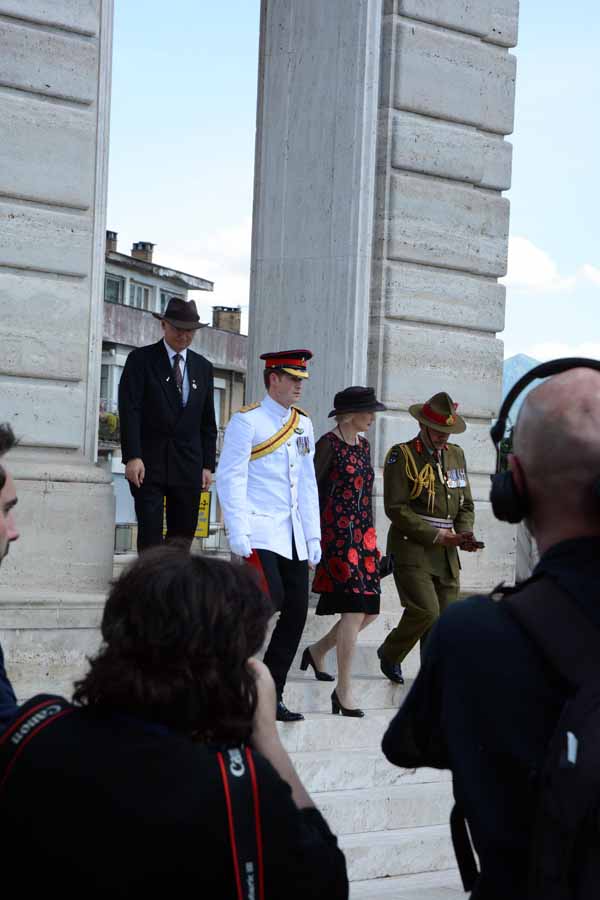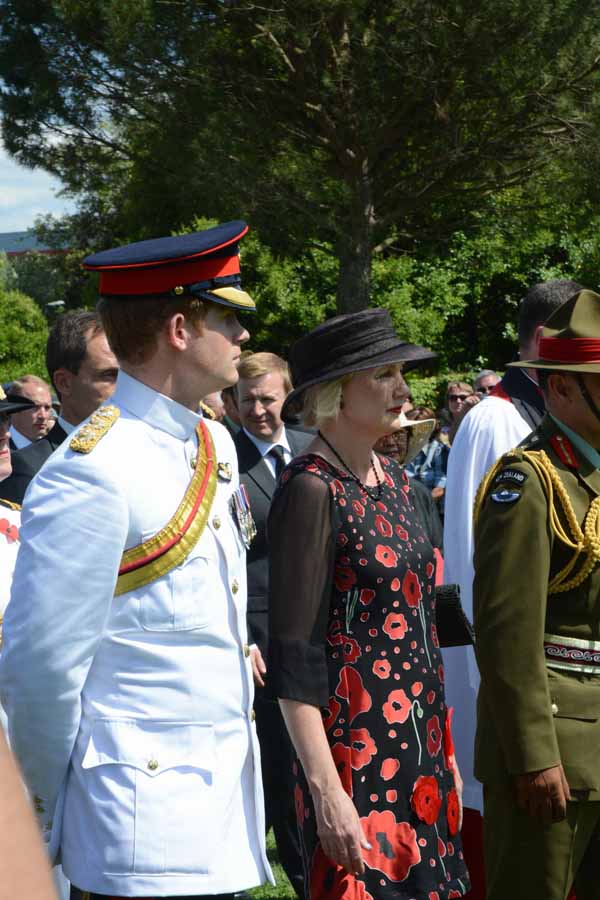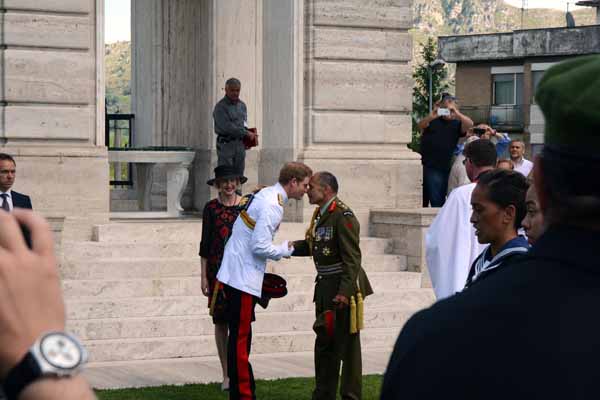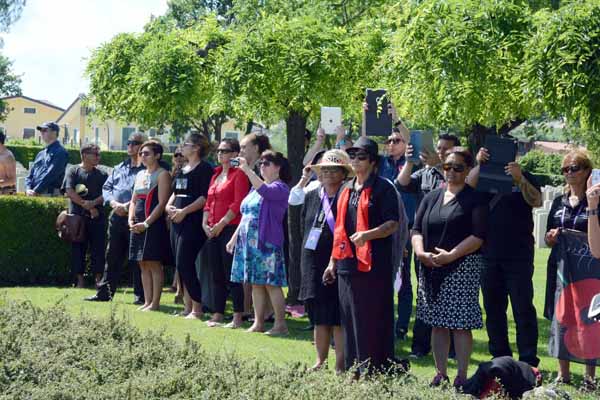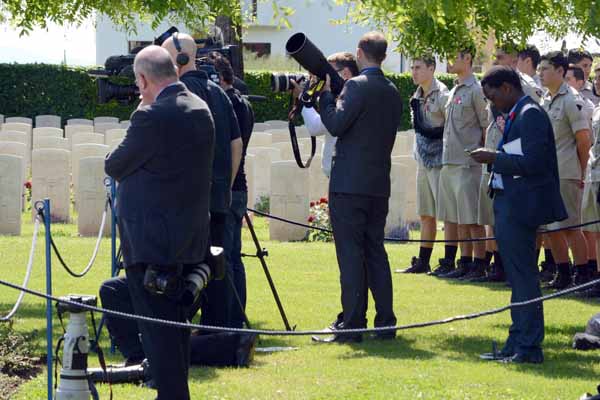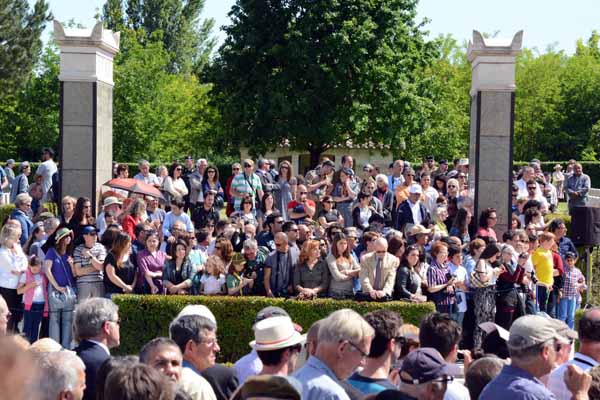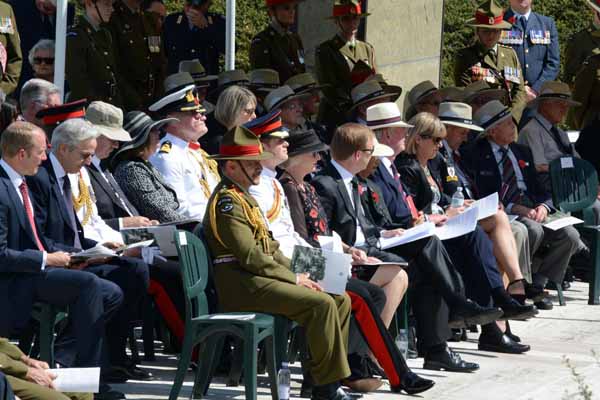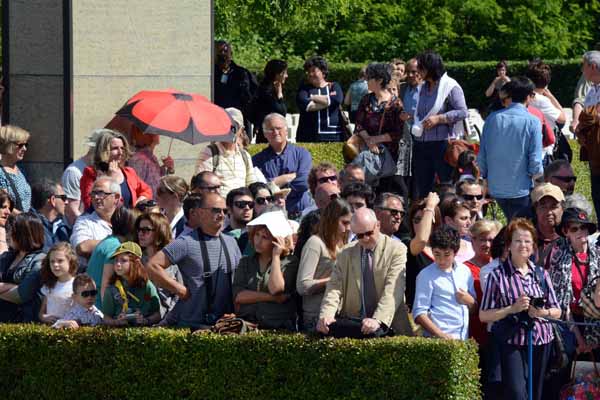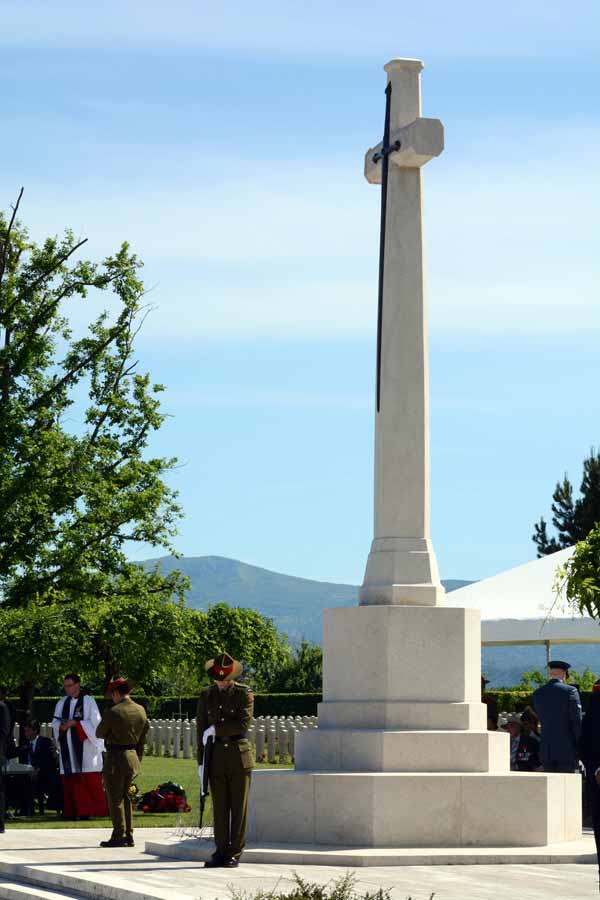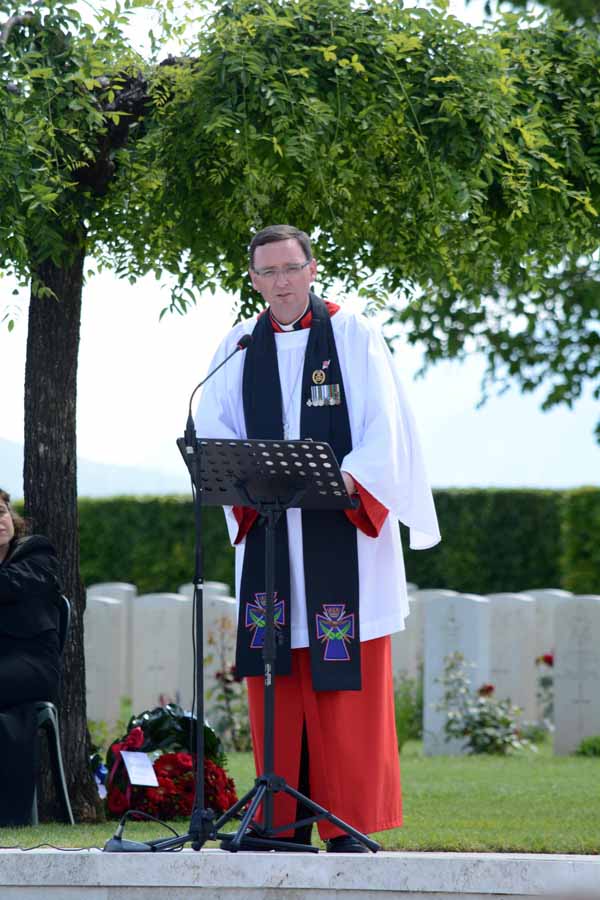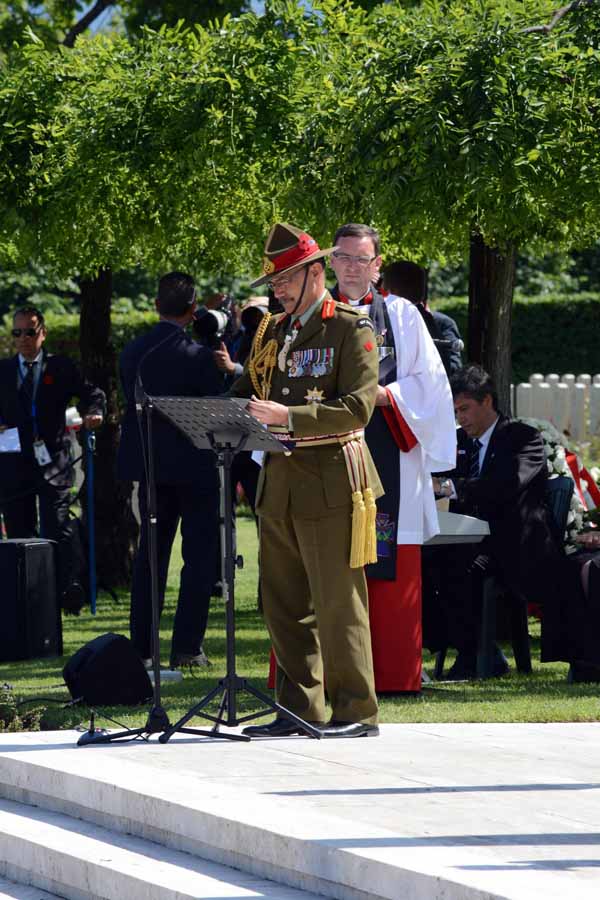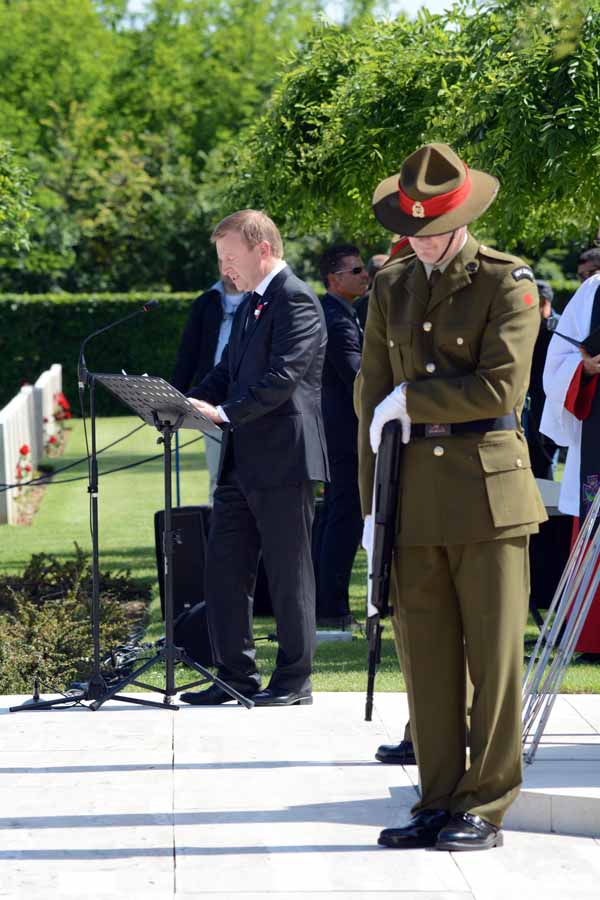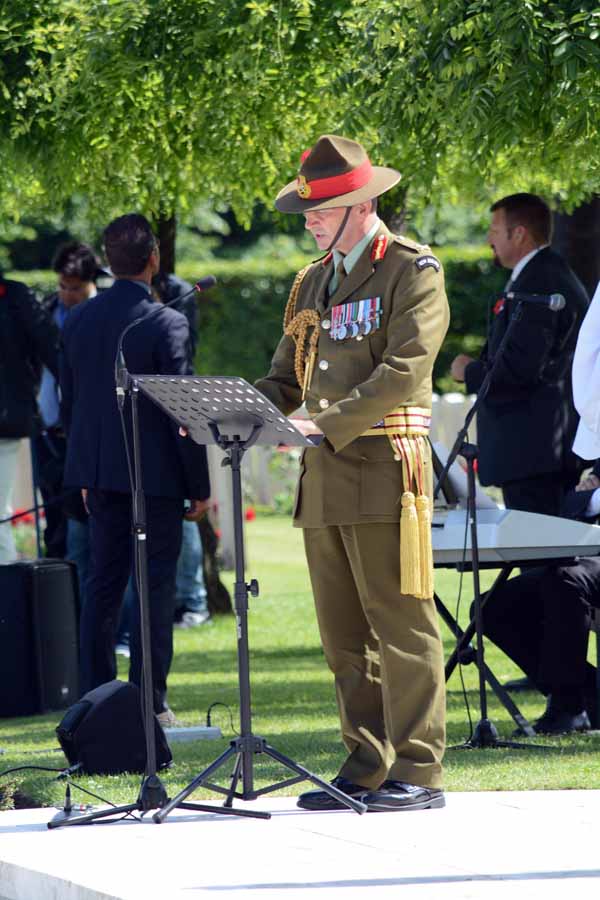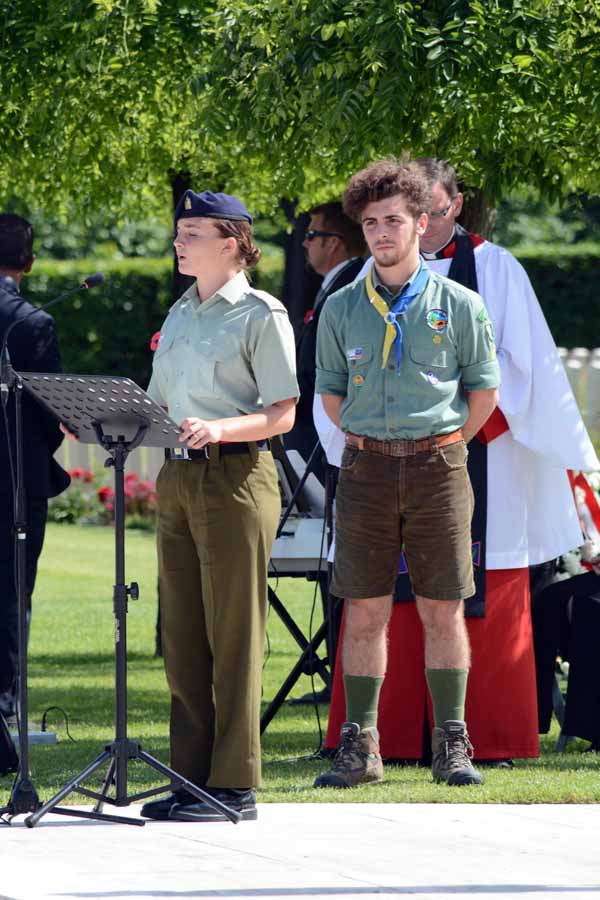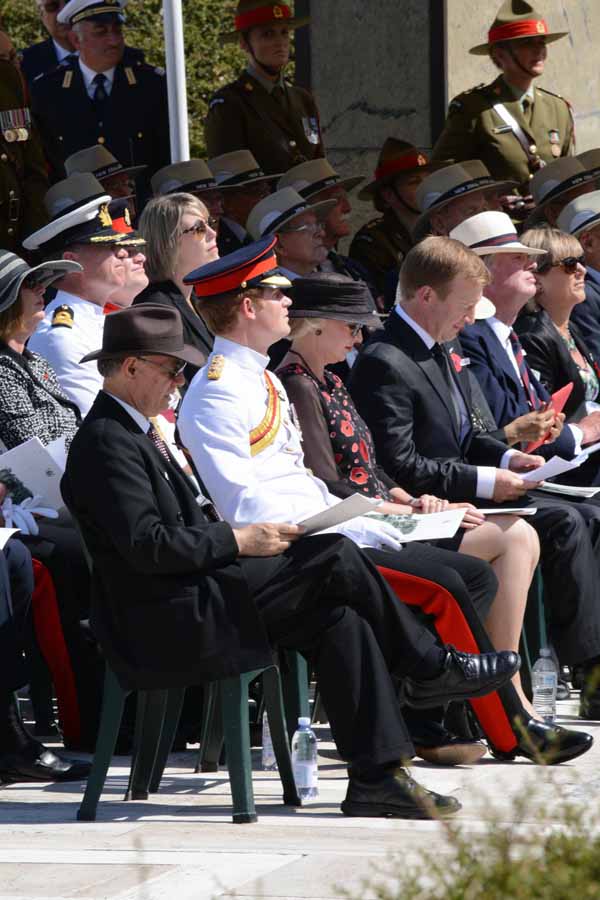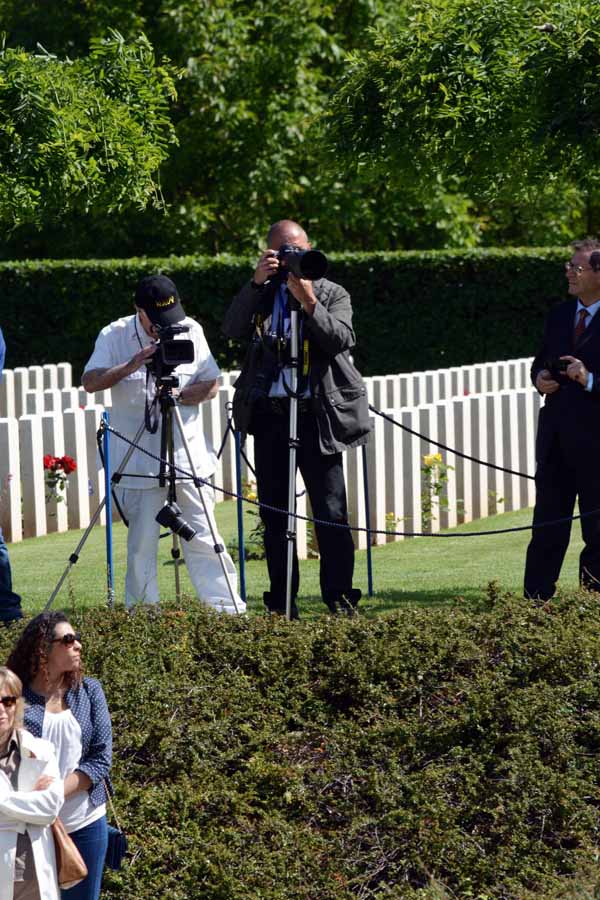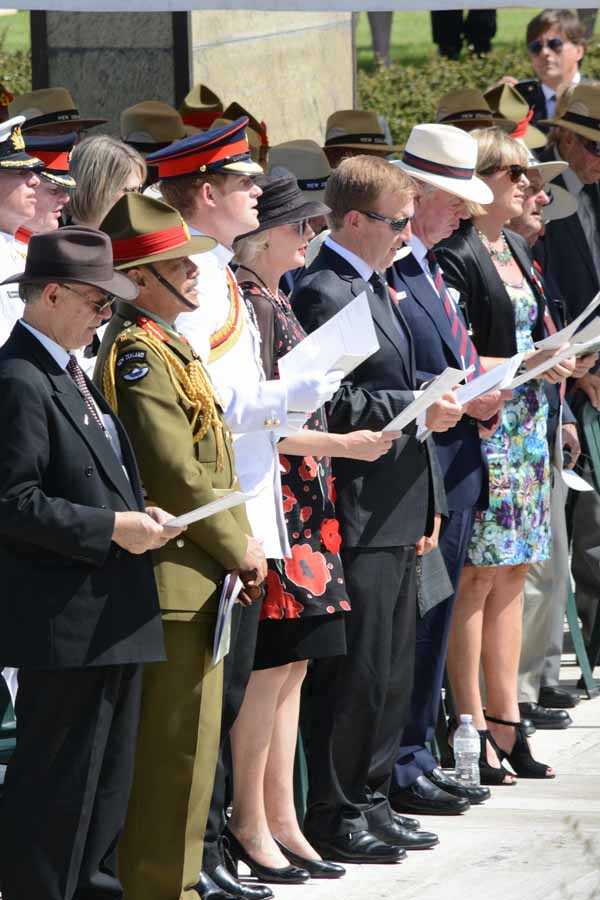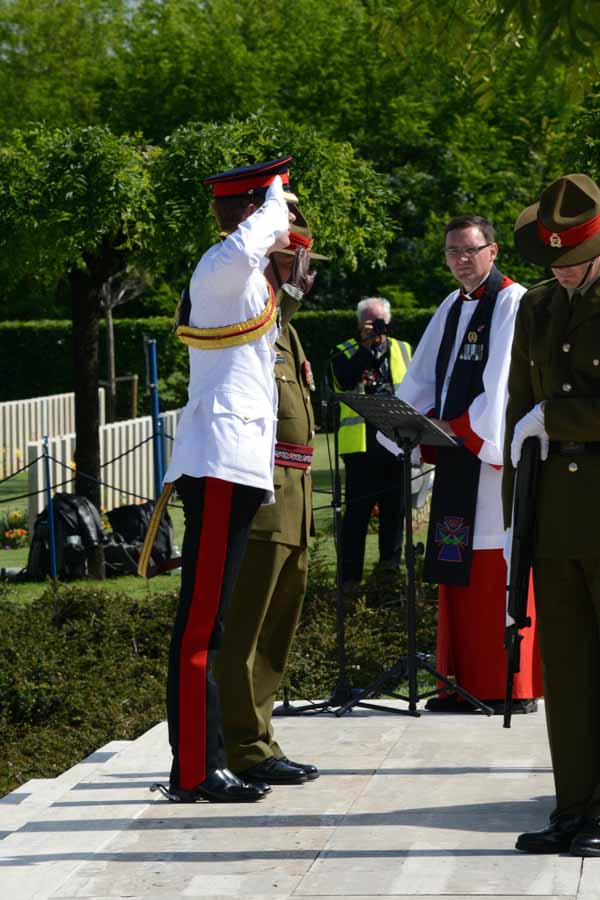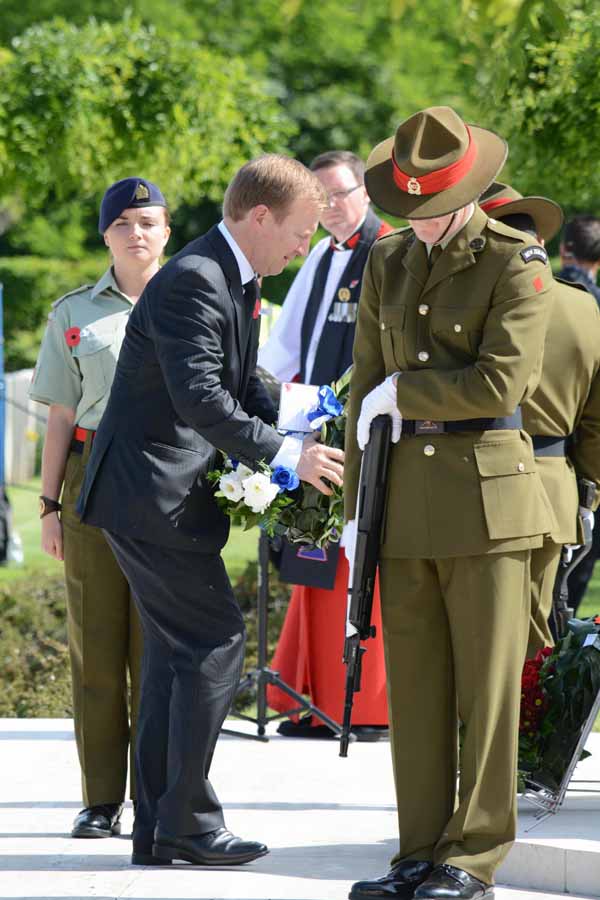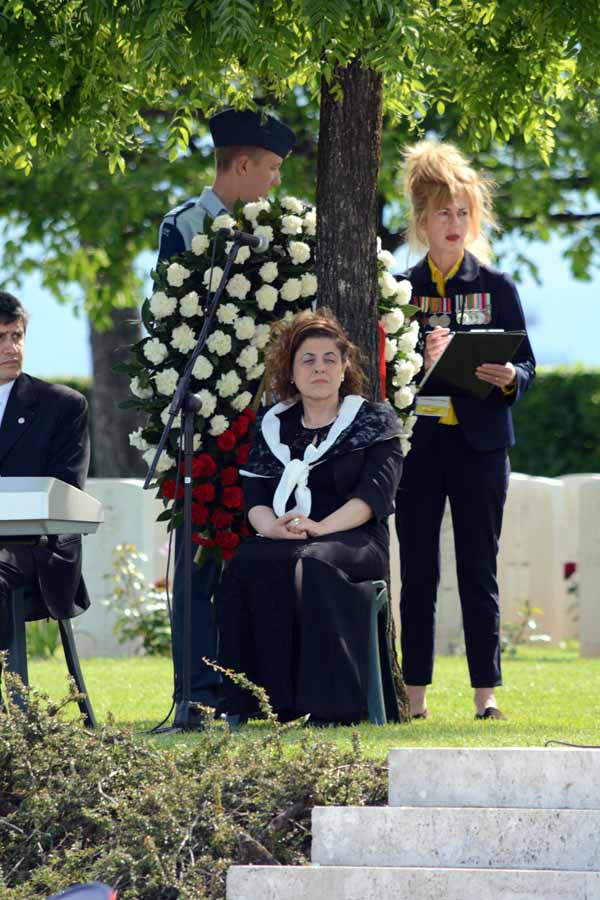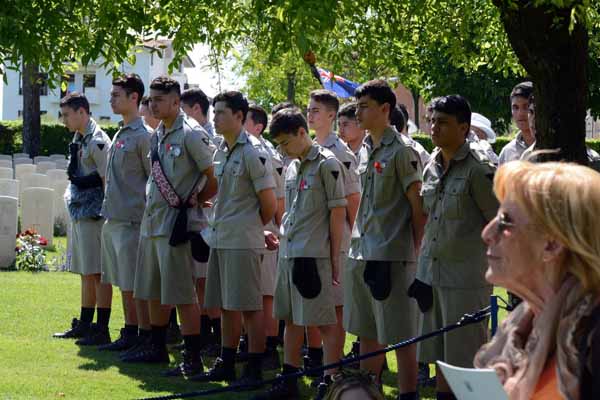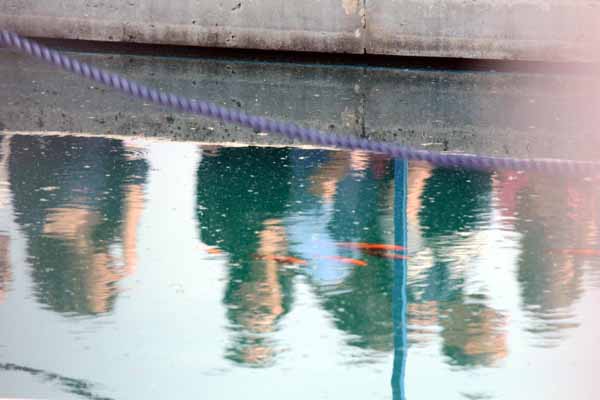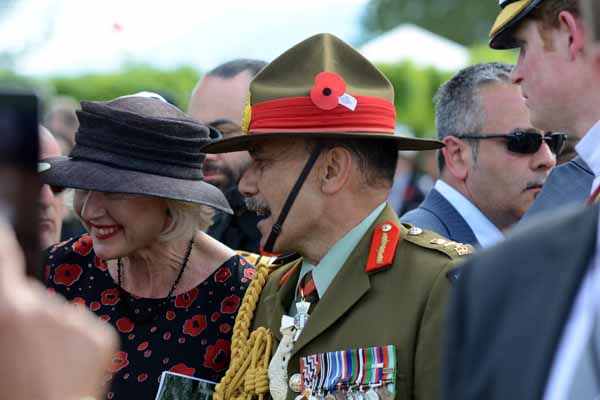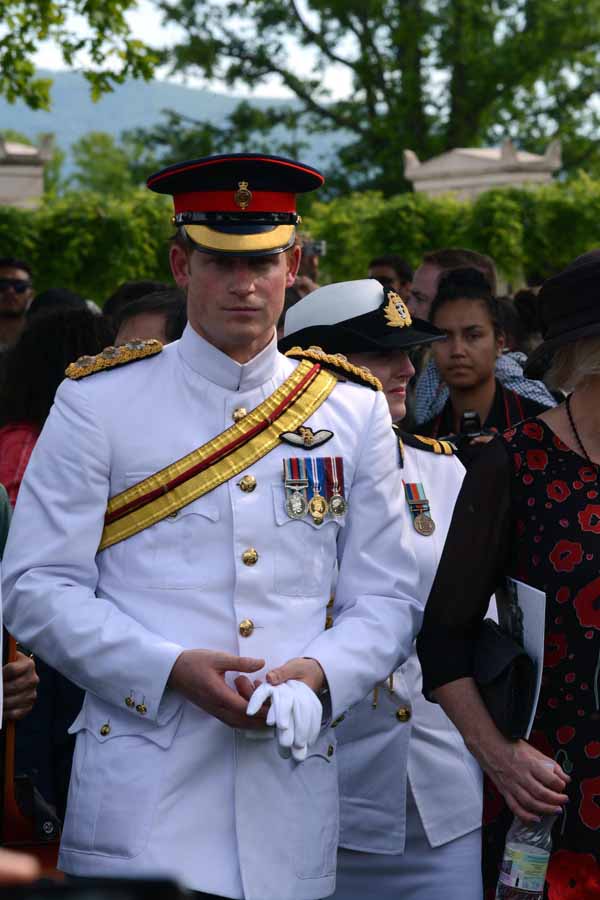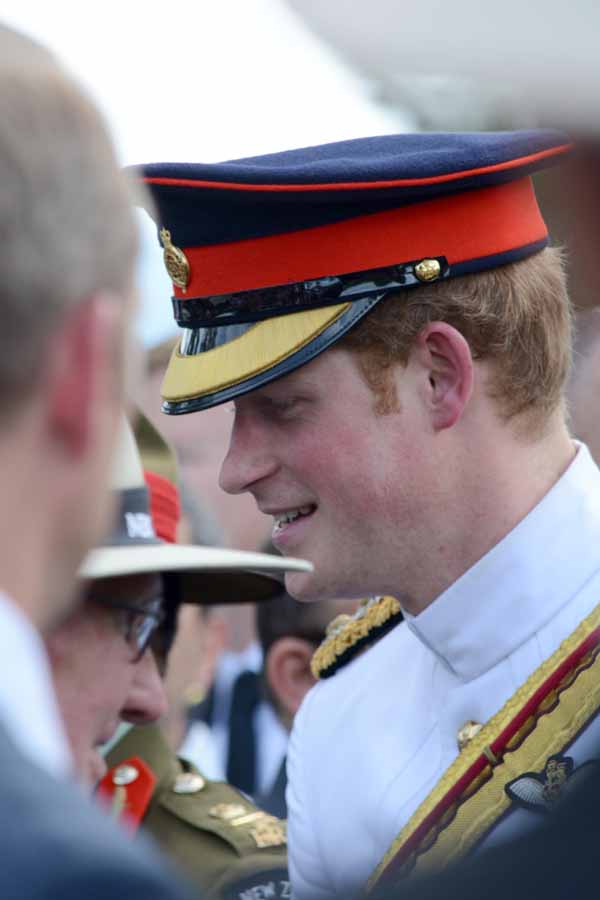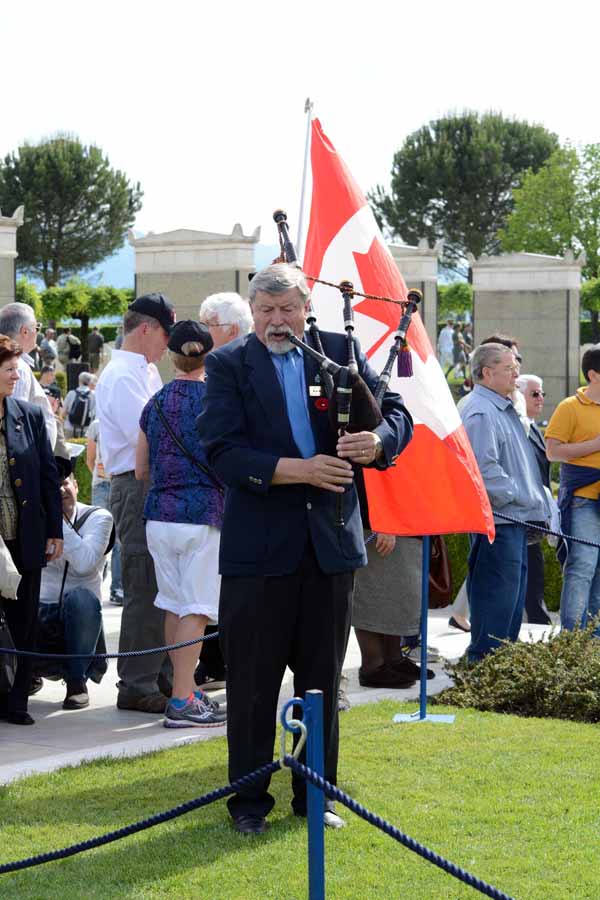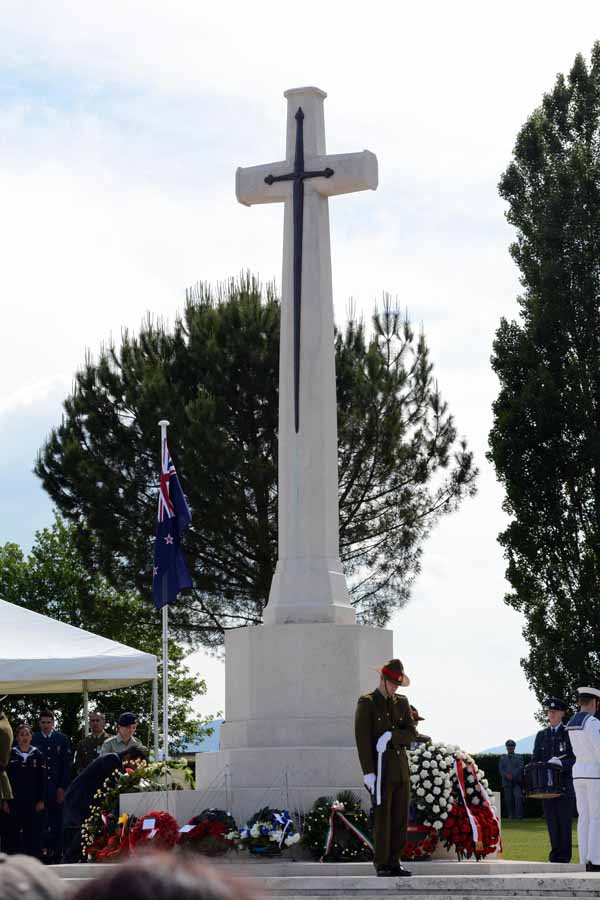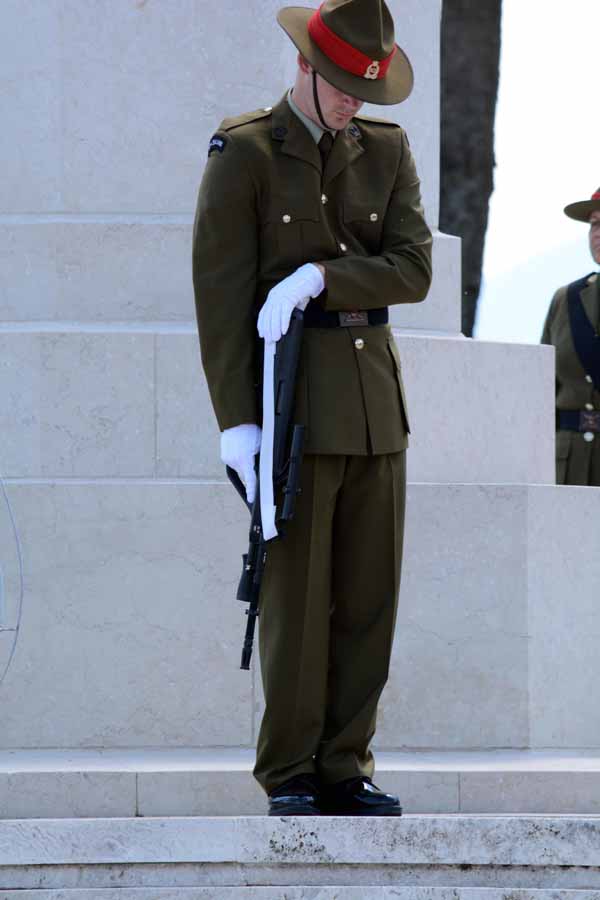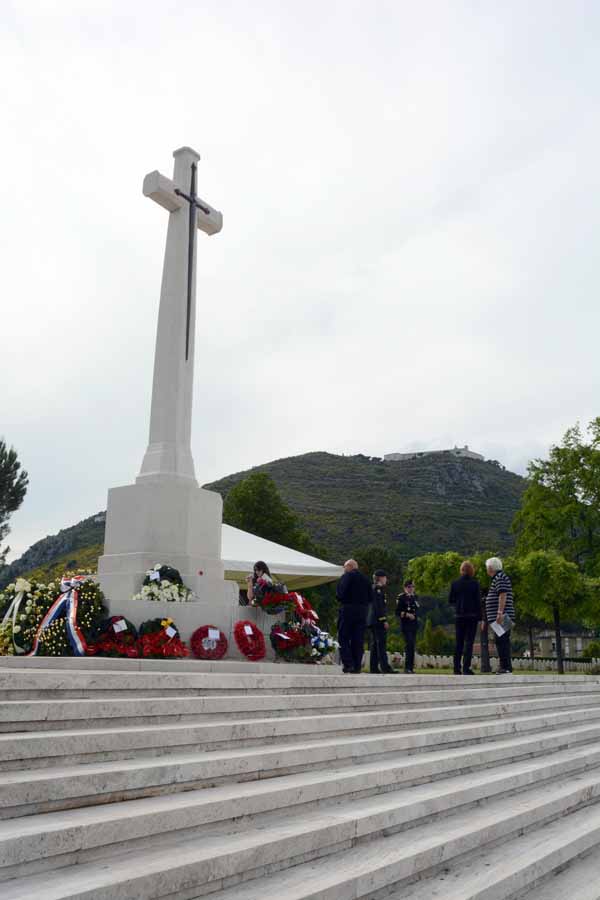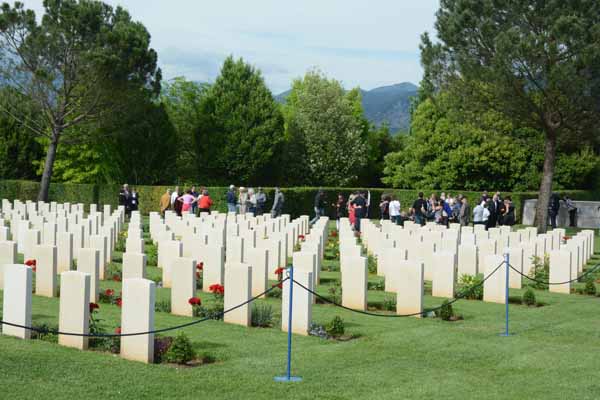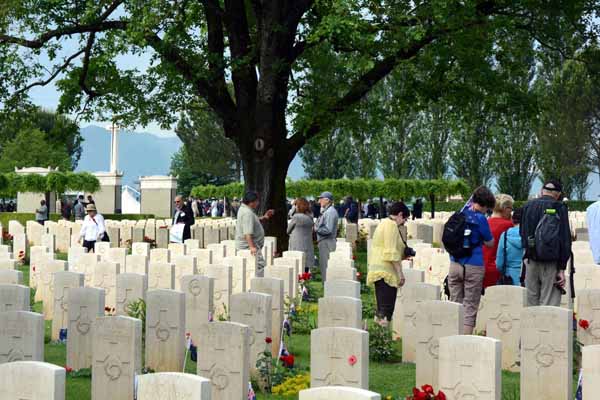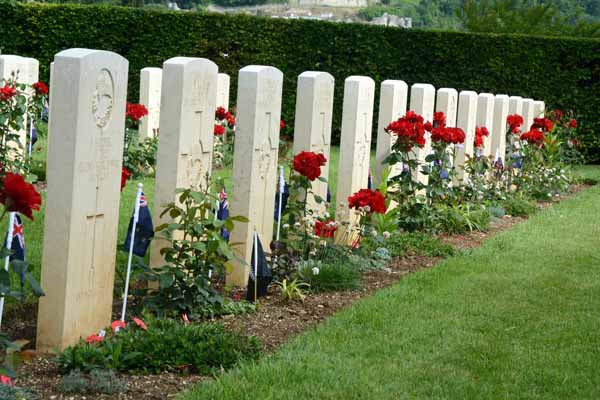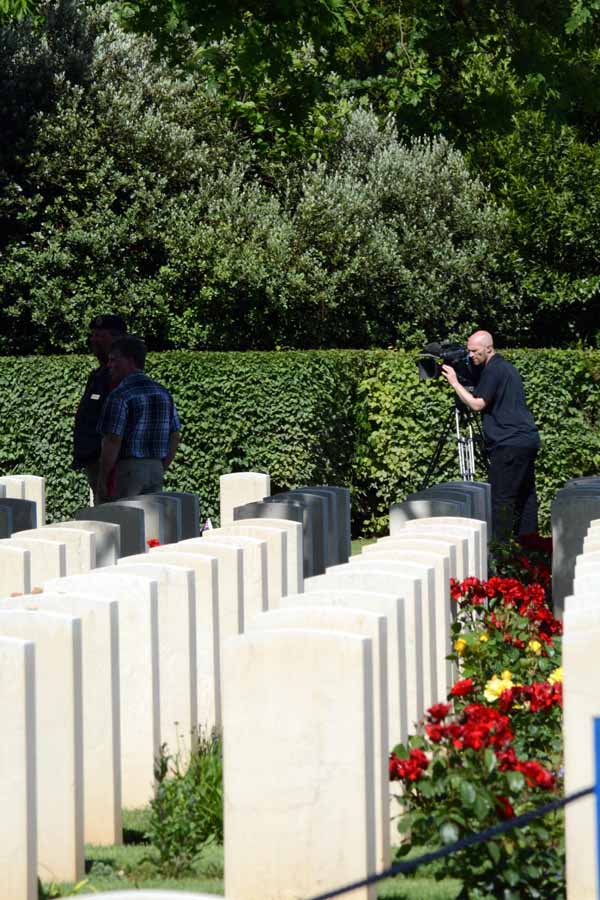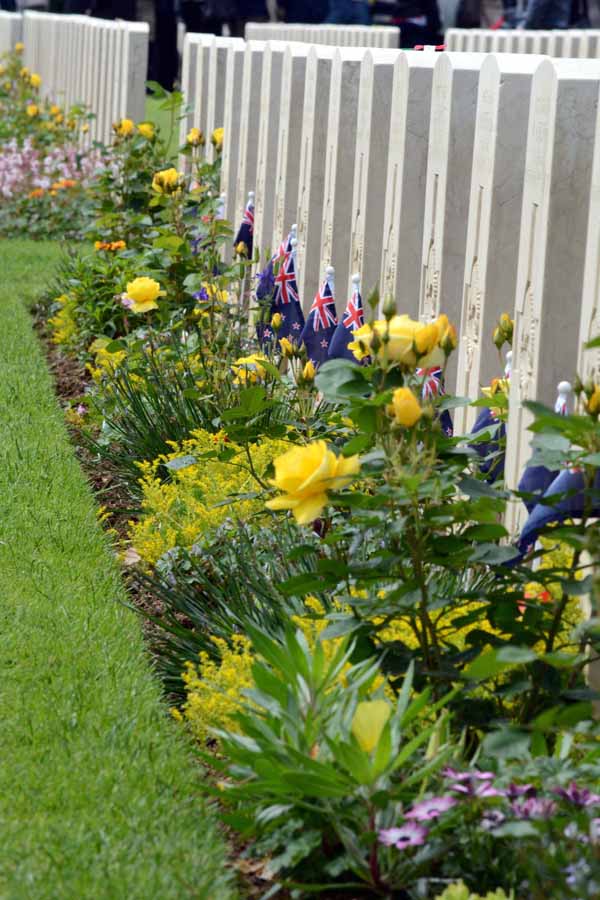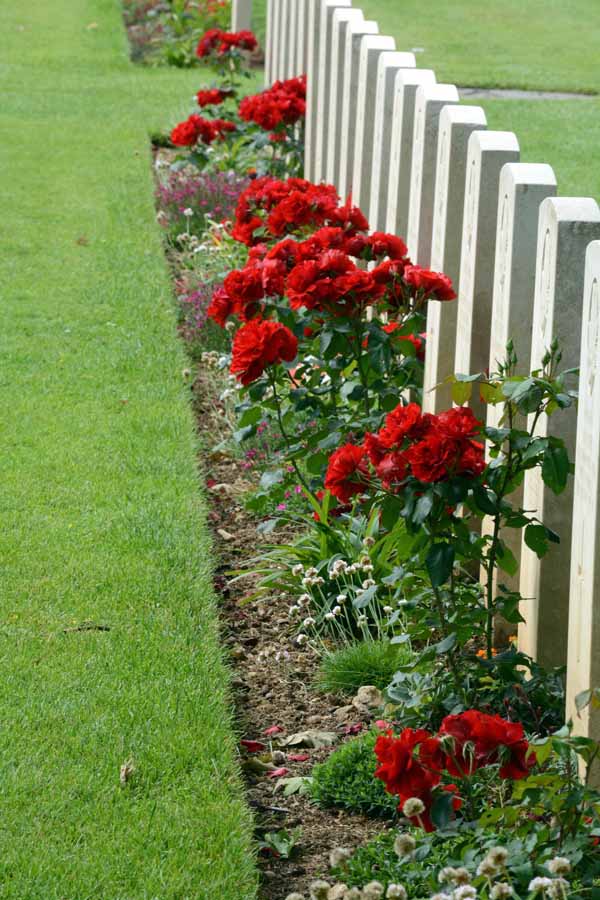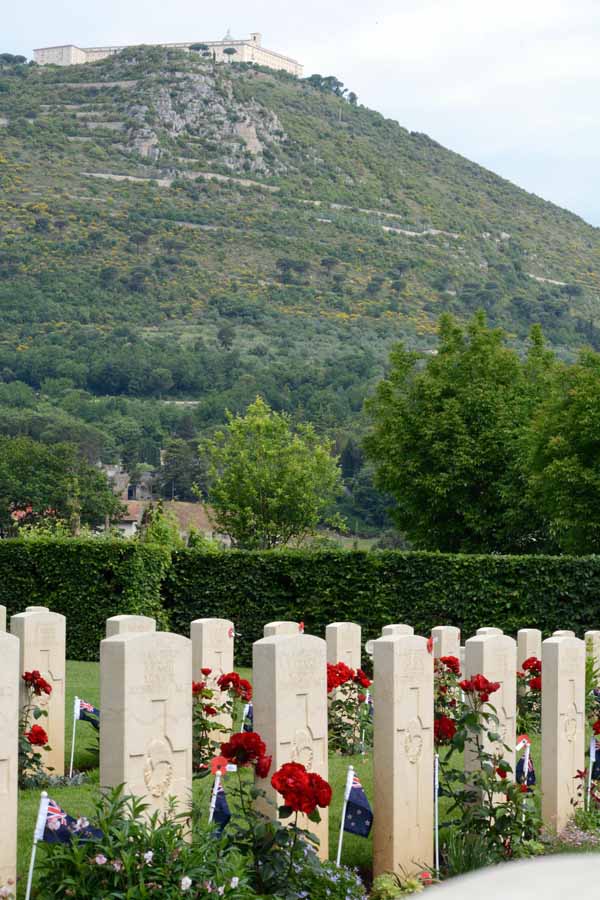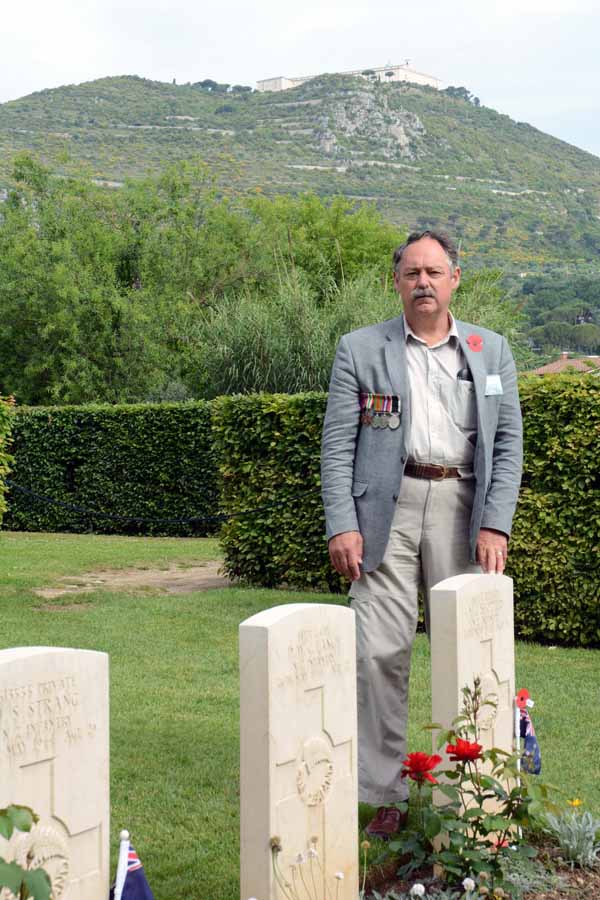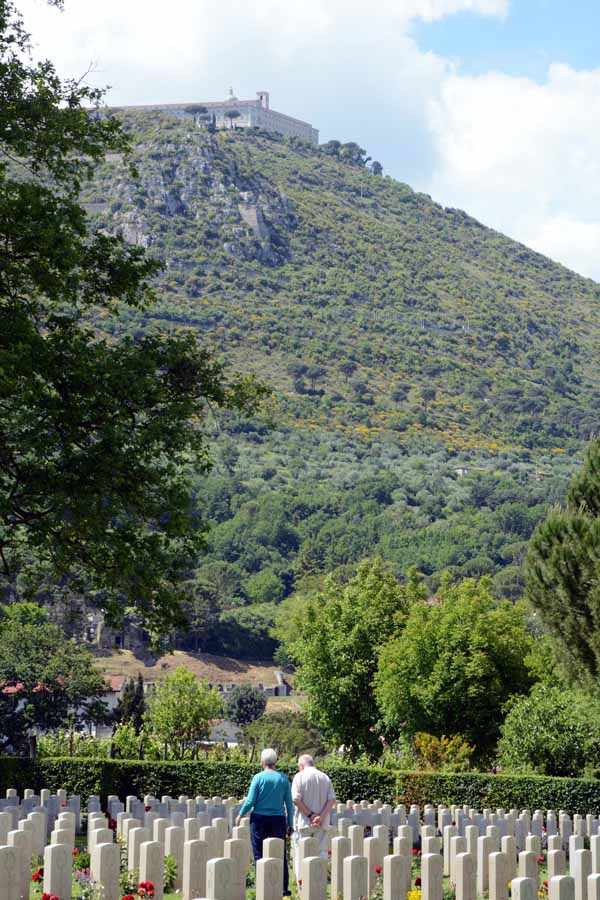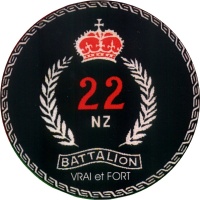
22nd Battalion 2NZEF
"Vrai et Fort"
Cassino Commemoration 2014 - 70 years on
The next generation returns
Day 5: The German Cemetery and the New Zealand Commemoration Service
Today was Sunday and this had originally been the day for the main international commemoration service at Cassino. As the planning progressed it became apparent that
the Polish people had decided to make the 70th year a major event. With a large Polish presence expected, new plans were needed.
So the Sunday morning was given over to Poland and the international service was moved to Monday. That left Sunday afternoon for the New Zealand service. It also meant that many people
had booked tours and hotels for the Saturday and Sunday and were expecting to depart on Monday morning. They could not change their plans, so would miss out on the international service.
The changes in the plan meant that we had some time on the Sunday morning. Those who were able to get a pass to the Polish Service were able to go, the remainder of our
group went off to Caira and the German Cemetery.
The German Cemetery at Caira
People often ask - "We read of the heavy German losses at Cassino, but where are they all buried?" About 3 kilometres north of Cassino and just out of sight of the Abbey, the German
Cemetery curves around the nose of a smooth ridge. The site of the cemetery was agreed between the German and Italian Governments in 1955, but it was not until 1959-1960 that reburials took
place. German casualties from all over the southern part of Italy were reburied here, being moved from Salerno, Ortona, Cassino and north to Florence. There are 20,027 burials,
including a group of unknown soldiers, buried near the 11 metre high cross at the top of the ridge.
Not as many people visit this place and it is not as well kept as the Commonwealth cemeteries. It appeared to have a sombre, and somewhat dark and oppressive feel compared to
the open and light Commonwealth cemeteries. This air is partly due to the large cyprus trees that stand guard throughout the cemetery. The place is also devoid of flowers.
However all of the graves are covered by a mass planting of St John's Wort, which produces a bright yellow flower in late Spring. We were a week or so too early for the flowers.
(It may be coincidental, but St Johns Wort was once believed to cure depression and to ward off evil.)
|
The Abbey of Monte Cassino in the early morning mist.
|
|
|
|
Also the ruins of Castle Hill.
|
|
The mist eventually cleared.
|
|
The small sign to the German Cemetery.
|
Sign at the entrance gate.
|
Aerial view of the cemetery, compare to map below.
|
|
Our party walking up the steep road to the entrance.
|
The story of the cemetery in 3 languages.
|
The layout of the cemetery. Compare to photo above.
|
|
Map showing where interments had been moved from to form the Cassino Cemetery.
|
|
Lists of the missing.
|
|
The entrance building styled as a military bunker.
|
Bronze statue of grieving mother being consoled.
|
The first view as you exit the entrance building.
|
|
The view to the left, around the nose of the ridge.
|
There are six to a grave, three names on each side.
|
One of the upper levels of graves.
|
|
The Cyprus and Umbrella pines.
|
The Cross and flagpoles at the crest of the ridge.
|
|
|
Many graves are of the Unknown, amidst the St Johns Wort.
|
Looking south, but Monte Cassino is hdden behind the far ridge.
|
|
|
The large Iron Cross.
|
The sun behind the Cross.
|
The Cross with wreath.
|
The New Zealand 70th Commemoration Service
Word had spread that the New Zealand Service was to be attended by HRH Prince Henry of New Zealand (generally known as "Prince Harry"). Even the fiercely republican Italians were not
immune to the attractions of a handsome Prince, so that what might have been a small intimate ceremony, as it has been in the past, became a media circus. In the past, the NZ service had
been held in a corner of the Cemetery, amongst the New Zealand graves, but this time space and security won out and it was held in the central section at the far end of the reflecting pool.
The NZ veterans arrived early and were forced to stand in the shade of the large trees until all of the offical party had arrived. This might have over-taxed some of them, but the need for the
strict medical selection criteria now became apparent and none seemed overcome by heat or fatigue. With the arrival of Prince Harry the proceedings began.
Harry was greeted by the NZ Governor-General (General Sir Jerry Mataparae
- General Jerry) with the traditional hongi. Word has it that the Prince had spent some time practising this manoeuvre prior to arrival.
After the service, the veterans and officals moved off towards the far corner of the cemetery where most of the New Zealand graves lie.
Security people and officious Italian volunteers kept everybody else at a distance, including the NZ Veterans' Affairs doctor who
found herself on the wrong side of the cordon.
The security, however, did not stop many of the onlookers running through the cemetery and jumping from grave to grave in their haste
to get closer to the Prince for a photo. It was a very undignified display, but seemed to pass without comment.
The Order of Service for the New Zealand National Service can be seen here
|
Amongst the clutter of signs is one to the Cassino War Cemetery.
|
The view of the Cemetery as you emerge from the entrance.
|
The Veterans arrived early and waited in the shade of the trees.
|
|
|
Many of those in the crowd sought shelter in the shade as well.
|
Once, it was the murmur of the crowds that told of the arrival of dignitaries. Now it is the uplifting of iphones.
|
|
Sure enough, HRH Prince Harry had arrived.
|
After signing the official guest register, he met up with the NZ Governor-General
|
And Lady Janine in a stunning red poppy dress...
|
|
And was greeted with a traditional hongi.
|
The crowd rose and moved forward.
|
and so did all the photographers.
|
|
The crowds settled around the reflecting pool and the memorial walls
|
Those lucky enough to have seats, sat down
|
the remainder stood, seeking shelter from the sun, even under a Flanders poppy.
|
|
The ceremony was conducted by the Defence Force Chaplain.
|
|
It followed the usual pattern: an address by the Governor-General...
|
|
And by the Minister of Defence, Hon Jonathan Coleman...
|
And the Chief of Army Major-General Dave Gawn.
|
Then a reading by young Cadet Warrant Officer Tahlia Howard accompanied by an Italian military cadet, of a poem written by James McClymont, 2NZEF who is buried at Cassino War Cemetery.
|
|
Prince Harry followed the service...
|
and the photographers followed Harry.
|
|
|
The Governor-General laid the first wreath, followed by Prince Harry...
|
And then the Minister of Defence.
|
In the background, Sandy McKie of the NZDF maintained order, making sure the correct wreath was picked up.
|
|
The boys of the 28th Maori Battalion Leadership College waited patiently until they were called on for the haka.
|
And one minute silence was observed for people to reflect on the past.
|
Then Jerry and Janine...
|
|
accompanied by Harry moved off between the graves to meet the veterans.
|
|
A lone piper from the Canadian contingent, wrestled a few notes out of his bagpipe. The tune was well meant, and was appreciated by the crowd.
|
|
The catafalque party paused, and then moved off.
|
|
Leaving the Cross and wreaths for people to inspect.
|
|
Visitors and veterans moved between the headstones...
|
chatting and looking for graves.
|
|
|
The press, as always, were filming.
|
But it was the flowers, the yellow and red roses...
|
that stood out as the greatest memorial.
|
|
|
I stood where my father had stood in 1994 and 2004, beside the grave of Merv Shotter, his mate from New Plymouth.
|
And above all, the Abbey remained aloof, distant, but always there.
|
Return to top of page
Back to previous day 
 Forward to next day Forward to next day
Return to first page
Last updated: 20/07/14
|

